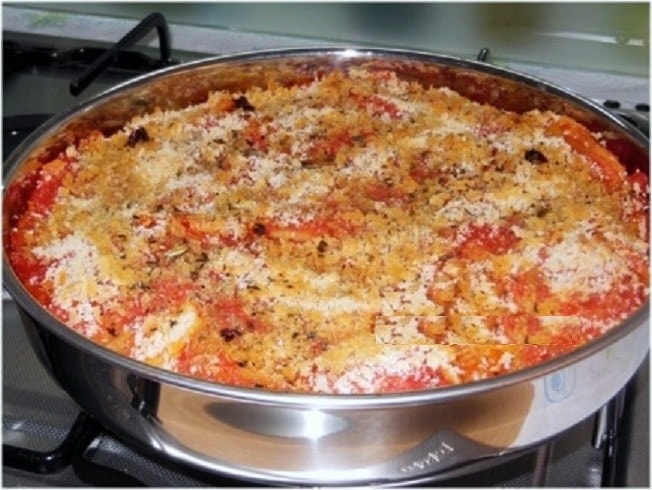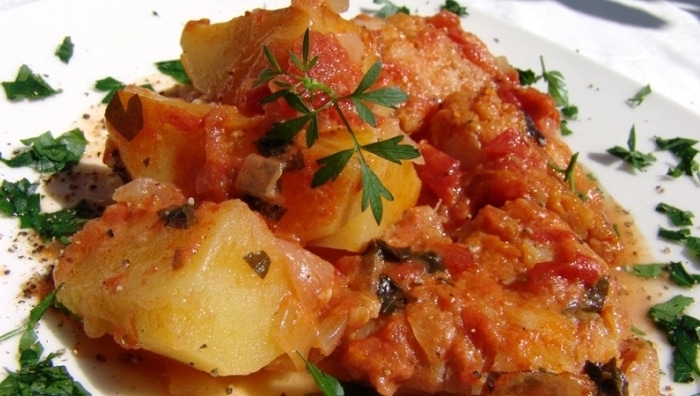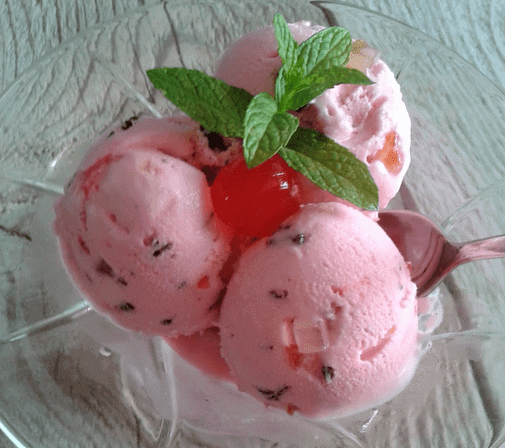Ask anyone passionate about Calabrian food, what color springs to mind, and almost without fail the answer will be red. Bright and voracious red is the signature color of Calabrian cuisine. Chili peppers, ‘nduja (a particularly spicy, spreadable pork salumi), and Tropea onions are the main characters of one of the most southern region of our country’s gastronomy. Calabria though is this and much, much more.
Gorgeous mountains and rolling hills, enclosed in 700 km of coastline, the area has established a reputation for delicious healthy red food. Calabrian food stands out from most essential Italian regional cuisines, simple and poor but at the same time bursting with full body flavors and rich aromas. Land and Sea, livestock, fishing, agriculture: everything contributes to creating a type of cooking with a clean and well-defined identity.

An inexpensive dish that comes from far away, the lagane are among the first types of pasta attested in ancient texts: similar to tagliatelle, but kneaded only with water and flour, the ingredients are cooked in salted water, and then seasoned with a sauté of oil, garlic, chili peppers and chickpeas, boiled separately.

It’s the simple version of the traditional pasta ‘ncasciata or pasta a lu furnu (baked pasta), where salami, hard-boiled eggs, meat, caciocavallo and provolone cheese come into play. In this variant the ingredients are severely limited with only pasta, potatoes, sauce, cheese and breadcrumbs. The unique characteristic of this dish is that the ingredients are cooked all together on the stove and finished in the oven, to give it a nice crispy crust, something which is a little more unusual in Italian cooking.

It’s the classic fresh pasta of the southern regions, made with re-milled durum wheat semolina and water. The underwire, from which they take the name, is the tool still used today for the preparation of this dish. In ancient times a small reed was used to help shape this type of pasta. This dish is served with very rich meat sauce, such as beef, pork or goat, or with the very famous’ nduja.

Known as the dish of the poor, this soup may contain different types of vegetables, such as escarole, chard, asparagus or carrots, depending on the area in which it is prepared. The main ingredient is the red Tropea onion, thanks to its full body flavor and sweetness. The vegetables are cooked with lard and water for several minutes until their consistency changes to mash and subsequently a succulent cream. Served with slices of toasted bread, chili peppers and pecorino on top.

The original street food, Italian food doesn’t get more authentic than this. In Italy, every part of the pig is utilized and nothing demonstrates that better than this dish. Cooked in wide copper pots lined with pork rind, initially the chef will wait for the fat to melt, before adding the neck, cheeks, kidneys, snout, tongue, ears, belly and all other parts of the pig that would be difficult to incorporate in other recipes.
After a slow and very long cooking process (6 to 8 hours) the meat, soaked with fat, will be soft and tender. The small pieces of meat left on the bottom of the pot, the fat and the rind, once solidified, are used to make turcuci (something similar to ciccioli, pressed cakes of fatty pork). They can be stored and used to flavor other dishes such as vermicelli ( a type of pasta) or polenta with broccoli.

If lamb is more to your taste, then this could be the recipe for you. This dish also uses the less popular parts of the sheep such as lungs, spleen, heart and tripe. All parts are coarsely minced, wrapped in lamb’s entrails and lightly browned in oil and onion, then simmered longer with the addition of fresh tomatoes, bay leaves and other aromatic herbs. Served with peppers and browned potatoes this dish is among the most traditional and delicious of this land, and for people on a budget it proves that great food need not be expensive.

Calabria is not all about meat. Here, as in nearby Sicily, the primary ingredient in many dishes is the ever popular swordfish. It can be prepared in many different ways. Riggitana style, with oil, garlic and parsley; Bagnarota style, double boiled with lemons and capers; Roasted and seasoned with salmoriglio (a sauce made with oil, hot water, garlic, parsley and oregano); or the Ghiotta style, a typical variation of Reggio and Messina area, with tomato, capers and olives.

Stoccafisso, or dried fish, once was an integral part of the diet of those social classes who could not afford fresh fish. In Calabria, the stocco is a multitude of recipes: it can be prepared with mushrooms, beans, in a salad with lemon and parsley and in a wide variety of other ways. The most famous of all remains the stocco alla Mammolese: in this town in the province of Reggio, where this product is still artisanally made, the dried cod, rehydrated in water, is cooked with tomato sauce, potatoes, peppers and olives. Every year on August 9th the medieval village of the town celebrates this particular dish with a festival, a tradition started in 1979.

Like many other recipes of Italian cuisine, the creation of this dish is completely random. A careless pastry chef, who did not have the flour to make a custard, decided to use rum instead. Consumed mostly as ice cream, this delicious pink custard is part of the list of Calabrian Traditional Agri-Food Products recognized by the Ministry of Agriculture, Food and Forestry.

Originally from Soriano Calabro, but now widespread throughout the region, are dry and hard biscotti, prepared with honey and flour and sometimes enriched with hot must. The expert bakers can give these biscotti animal, floral and anthropomorphic shapes and decorate their creations with colorful tinfoil, giving life to real works of art. If you are in Calabria and you find some, there is probably a festive atmosphere around. These sweets are typical of fairs, festivals, Easter and Christmas celebrations.
Did we miss any traditional Calabrese dishes? Let us know in the comments below!

Help please. We are very interested in experiencing the Calabria area. However, a big issue is the fact my wife has celiac disease and therefore CANNOT eat anything with flour, wheat, barley. If we go to a restaurant will they understand and adapt for this necessity. GRAZIE
Hi Daniel – You should be fine in bigger cities and touristic places, more difficult in smaller towns.
Takes me back to my childhood. In la america you cannot buy some of the meat parts other than tripe which I love. Maybe heart and kidney but nothing else
All looks amazing
Love all the Calabria recipes especially those of my town Mammola.
There are so many good recipes!! Grazie mille Angela for stopping by!
My in laws immigrated from Calabria to Chicago about 1913. I enjoyed your recipies but there was not one thing there they cooked which I find very interesting. But there food was so delicious. Any comments?
Hi Arlene, the recipes in this post are lesser unknown anywhere except for Calabria. Even in Calabria they are probably hard to find, except for a few ones, because they are connected to the peasant tradition made with ingredients that are from people close to animal processing.